#Deep ocean
Text
Cryptid fish that has only been seen once and never again that may or may not exist but well never know my beloved

#BIG FUCKING DRAGONFISH IS JUST THERE IN THR SEA and HAS ONLY BEEN SEEN ONCE and NO ONE FUCKING KNOWS IF ITS REal????#oceanology#fish#marine biology#marine life#marine ecology#oceanography#deep ocean#marine#deep sea#conspiracy#cryptid#cryptids#cryptozoology#USO#conspiracy theory#marine fish#William Beebe#Otis Barton#fish facts#ocean life
13K notes
·
View notes
Text

This is very important
#shark#bluntnose sixgill shark#goofy little guy#sharks#I must recreate this in clay#majestatic#beautiful#look at my son#crying rn#dark academia#ocean creatures#deep ocean#shork
10K notes
·
View notes
Text
You’ve heard of the itsy bitsy spider, now meet the giant sea spider. 🕷️
Like spiders on land, sea spiders—also known as pycnogonids—come in a range of sizes and appearances. They’re widespread and occur across a variety of ocean environments. The deep sea is home to the giant sea spider (Colossendeis sp.), which can grow larger than a dinner plate. This spindly spider lumbers along the seafloor on jointed, stilt-like legs.
Instead of spinning a delicate web of silk to trap prey, a giant sea spider uses an elongate, tube-like proboscis to slurp up its prey. While studying the unique communities that form around decomposing whale carcasses on the deep seafloor, MBARI researchers observed a giant sea spider crouched over and clinging to the fleshy tentacle of a pom-pom anemone (Liponema brevicorne). Upon closer inspection, the sea spider was actually sucking out the juices inside the tentacle. Another sea spider was even observed clipping a couple of tentacles and taking its dinner to go!
2K notes
·
View notes
Text
#poll#marine life#marine biology#deep ocean#deep sea#whalefall#fish#hagfish#crabs#shark#deep sea isopod
8K notes
·
View notes
Text
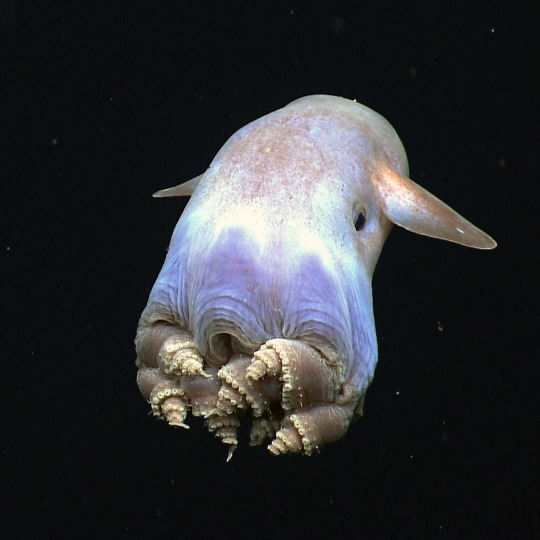
Cephalopod lovers, have you ever heard of the Dumbo octopus? 🐙 Members of the genus Grimpoteuthis, these critters are the deepest-living octopus known to science and can be found near the seafloor at depths of up to 13,000 ft (4,000 m). These adorable cephalopods flap their ear-like fins as they move through the water—a behavior that inspired scientists to name the genus Grimpoteuthis after Disney’s flying elephant. Unlike many other octopuses, Dumbo octopuses do not have ink sacs. Some scientists think it’s because they rarely encounter predators in their extremely remote, deep-sea habitats.
Photo: NOAA Okeanos Explorer, CC0, Wikimedia Commons
#science#nature#natural history#animals#cool animals#cephalopods#did you know#fact of the day#marine biology#ocean life#deep ocean#dumbo octopus#octopus
851 notes
·
View notes
Text
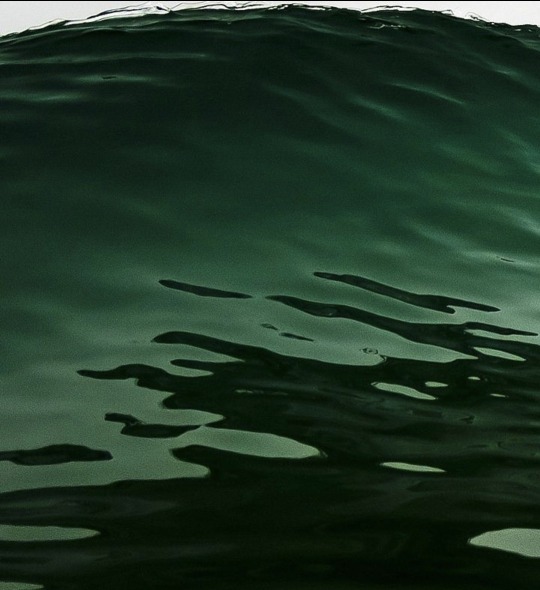



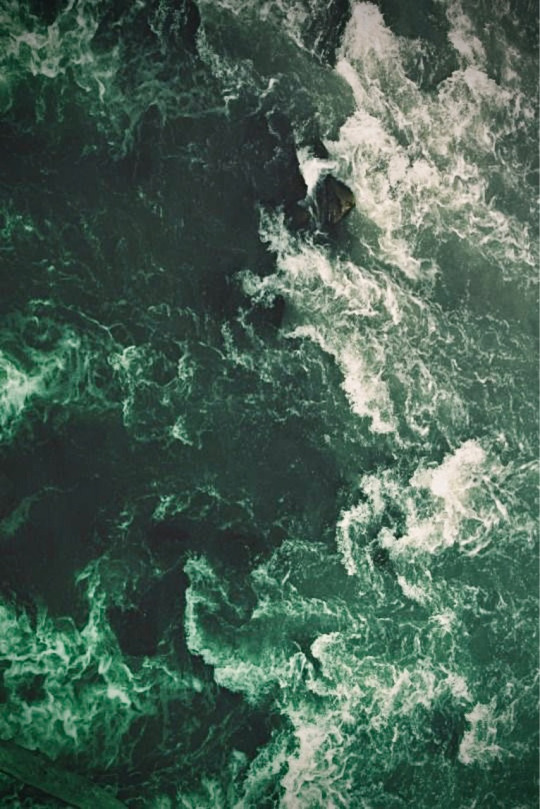
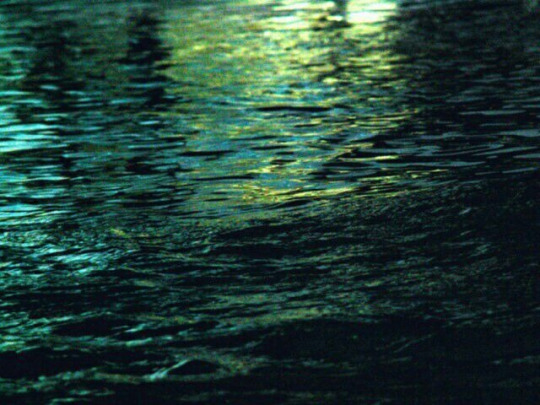
Aes request for anon ~ Green waves
#ocean#ocean aesthetic#sea#seacore#seascape#mermaidcore#water#siren#sirencore#waves#green#moodboard#green waves#oceania#lovely#deep ocean#ocean eyes#lakes#beach#beautiful#beauty#athena#tidal wave#tide#sea waves#surf paradise#dark aesthetic
2K notes
·
View notes
Text

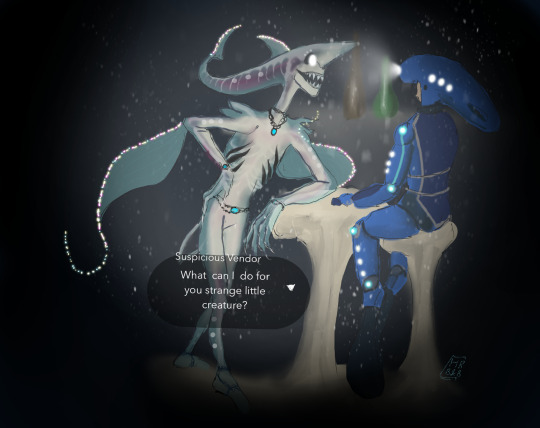
Big king deluxe and a sus goblin shark inspired vendor that mixes you medicine that is helpful to use in certain environments (or not)
#the legend of zelda#tears of the kingdom#breath of the wild#link#zora#zora oc#deep sea au#deep ocean#deep sea creatures#oceancore#my art#oarfish#goblin shark
256 notes
·
View notes
Photo

"Waives of thoughts" by Leyinska Gutierrez
#art#print#illustration#artist#leyinska gutierrez#jellyfish#mermaid#thoughts#shark#black woman#deep ocean#spiritual art#ocean life#mermaid art#woman art#under the ocean#woman painting#tantra#waives painting
288 notes
·
View notes
Text

Michael Hutter
#art#scifi#sci fi#science fiction#digital art#scifiart#aesthetic#futuristic#scifi art#odd#surrealart#surrealism#submarine#ocean#deep sea#deep ocean#demons#old scifi#retro scifi#scifi horror#vintage scifi#sci fi horror#scifi aesthetic#scififantasy#eldritch#lovecraftian#creatures#monsters#dark painting#paintings
217 notes
·
View notes
Text
Did you know that 4000 metres bellow the ocean there are chemosynthetic bacteria that are specifically evolved to digest the wood of trees that have grown on land?
The wood on the sea floor can come from trees that fall into lakes and end up in the ocean, or wooden ships that have sunken. (Called 'Wood-falls')
The reason why deep marine organisms are able to digest wood despite never seeing the light of day, let alone a plant - since plants are unable to grow in the deep ocean because of a lack of sunlight - is because the ocean is so isolated and scarce of food that when a new food source is suddenly available, organisms rapidly evolve to be able to eat it.
This is called 'Adaptive Radiation', and can also occur on isolated islands.

#Ocean#oceanology#marine biology#marine ecology#marine ecosystem#marine life#deep ocean#deep sea#microbiology#oceanography#oceancore#ocean floor#marine#seacore#Sea#deep marine life#sailorcore#fish#the abyssal#oceanic#sea#marine love#fun facts#ocean facts#marine biodiversity#evolution
7K notes
·
View notes
Text
2K notes
·
View notes
Text
youtube
Watch the American Climate Leadership Awards 2024 now: https://youtu.be/bWiW4Rp8vF0?feature=shared
The American Climate Leadership Awards 2024 broadcast recording is now available on ecoAmerica's YouTube channel for viewers to be inspired by active climate leaders. Watch to find out which finalist received the $50,000 grand prize! Hosted by Vanessa Hauc and featuring Bill McKibben and Katharine Hayhoe!
#ACLA24#ACLA24Leaders#youtube#youtube video#climate leaders#climate solutions#climate action#climate and environment#climate#climate change#climate and health#climate blog#climate justice#climate news#weather and climate#environmental news#environment#environmental awareness#environment and health#environmental#environmental issues#environmental justice#environment protection#environmental health#Youtube
6K notes
·
View notes
Photo

Daughter of Abyss, acrylic painting by 1oneAS
515 notes
·
View notes
Text
Giants lurk in the ocean’s mysterious midwaters.
While surveying the Gumdrop Seamount off the central California coast in 1998, MBARI staff spotted an unusual—and exceptionally large—jelly. This crimson creature was a full meter across. Unlike jellies that dwell near the ocean’s surface, this one didn’t have tentacles. Instead, a cluster of finger-like oral arms dangled beneath its bulky bell.
A closer look confirmed this was a new species—and one that had actually eluded our scientists five years earlier. Detailed video observations captured by our robotic submersibles helped MBARI researcher George Matsumoto and his colleagues in California and Japan formally describe this unusual jelly. They named it Tiburonia granrojo in honor of MBARI’s now-retired remotely operated vehicle (ROV) Tiburon, which was instrumental in documenting this delicate drifter in its natural environment.
Scientists have since spotted this jelly across the Pacific Ocean, from Baja California to Hawaii to Japan. That something so big remained undiscovered for so long shows how little we’ve explored the deep sea—and what more must be out there waiting to be found.
1K notes
·
View notes
Text
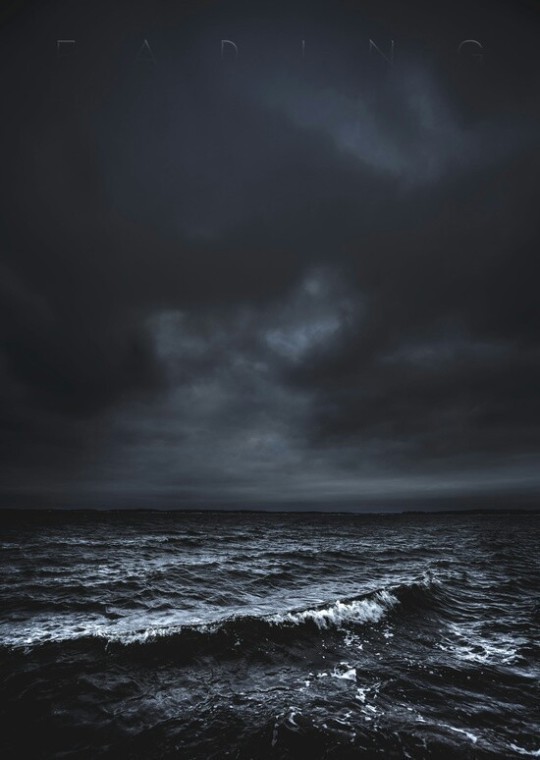
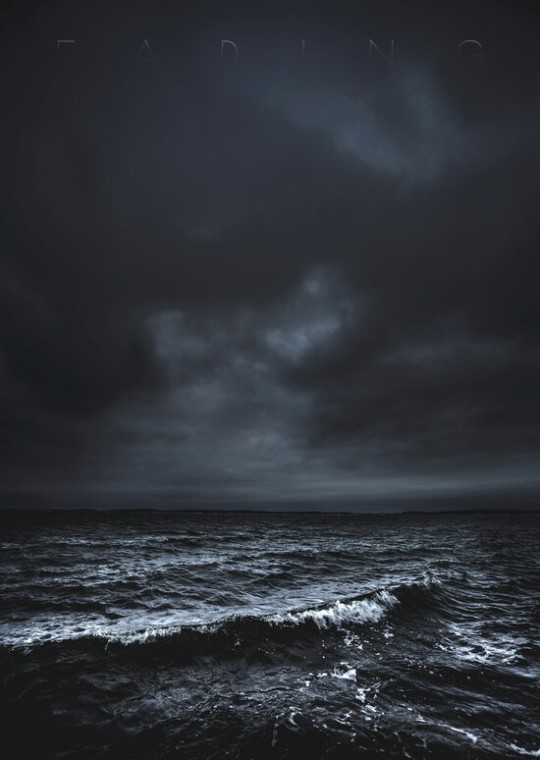
#ocean#sea#black clouds#aesthetics#deep ocean#nature#art#nature photography#ocean view#deep sea#sealife#seaside#seascape#dumblr
1K notes
·
View notes
Text
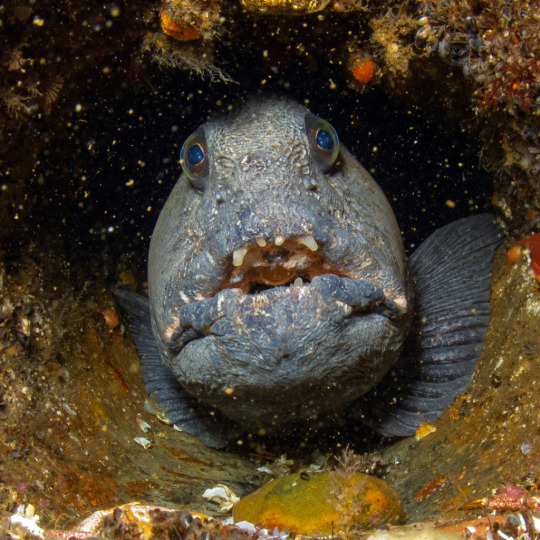
Have you ever seen an Atlantic wolffish (Anarhichas lupus)? Growing up to 6 ft (2 m) long and weighing up to 50 lbs (22.6 kg), this predator can be found lurking among rocky caves on the ocean floor. It uses its massive molars to crush the shells of bottom-dwellers including scallops and crabs. Because its teeth wear down quickly from constant grinding, they are replaced annually—and the wolffish is forced to fast for months until its new teeth come in.
Photo: alex_shure, CC BY-NC 4.0, iNaturalist
#science#nature#natural history#animals#wolf#wolf fish#ocean life#marine biology#cool animals#did you know#fish#deep ocean#halloween
558 notes
·
View notes